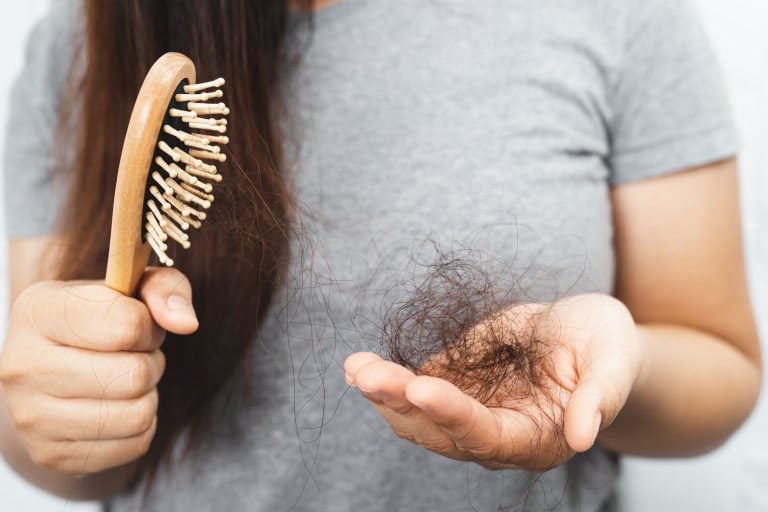Vulvovaginal candidiasis (VVC), commonly known as a vaginal yeast infection, is a fungal overgrowth that occurs in or around the vagina.1Valentine M, Wilson D, Gresnigt MS, Hube B. Vaginal Candida albicans infections: host-pathogen-microbiome interactions. FEMS Microbiol Rev. 2025;49:fuaf013. https://doi.org/10.1093/femsre/fuaf013 The infection is most often caused by Candida albicans, though non-albicans species such as Candida glabrata, Candida tropicalis, and Candida parapsilosis may also be responsible.2Kalia N, Singh J, Kaur M. Microbiota in vaginal health and pathogenesis of recurrent vulvovaginal infections: a critical review. Ann Clin Microbiol Antimicrob. 2020;19(1):5. https://doi.org/10.1186/s12941-020-0347-4
Excessive Candida growth triggers inflammation, which can lead to pain, burning, itching, and redness near the labia or other parts of the vagina.1Valentine M, Wilson D, Gresnigt MS, Hube B. Vaginal Candida albicans infections: host-pathogen-microbiome interactions. FEMS Microbiol Rev. 2025;49:fuaf013. https://doi.org/10.1093/femsre/fuaf013 Curd-like discharge, painful urination, and pain during sex are often reported with vaginal candidiasis.3Xie HY, Feng D, Wei DM, et al. Probiotics for vulvovaginal candidiasis in non-pregnant women. Cochrane Database Syst Rev. 2017;11(11):CD010496. https://doi.org/10.1002/14651858.cd010496.pub2
What causes yeast infections?
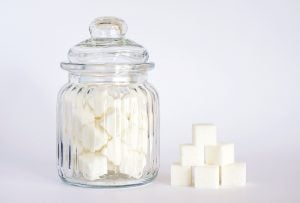
Most women experience at least one yeast infection in their lifetime.4Vaginal Yeast Infection. MedlinePlus. National Library of Medicine. Reviewed July 12, 2023. Accessed August 14, 2025. https://medlineplus.gov/ency/article/001511.htm Nearly half of all women will have two or more infections, while an estimated five to eight percent struggle with recurrent vulvovaginal candidiasis (RVVC). RVVC is defined as four or more yeast infections in a year.3Xie HY, Feng D, Wei DM, et al. Probiotics for vulvovaginal candidiasis in non-pregnant women. Cochrane Database Syst Rev. 2017;11(11):CD010496. https://doi.org/10.1002/14651858.cd010496.pub2
“Yeast overgrowth is often triggered by antibiotic use, hormonal changes, poorly controlled diabetes, high-sugar diets, and excess moisture from tight clothing,” says Sarah Bonza, MD, MPH, FAAFP, an Ohio-based women’s health expert and founder of Bonza Health. “Anything that disrupts the vaginal microbiome, such as douching or scented products, can [trigger yeast growth].”
Sex and pregnancy also affect the vaginal microbiome, as well as taking oral contraceptives or over-the-counter (OTC) antifungal medicines. A history of bacterial vaginosis (BV) and allergic diseases may increase the risk of yeast infections.1Valentine M, Wilson D, Gresnigt MS, Hube B. Vaginal Candida albicans infections: host-pathogen-microbiome interactions. FEMS Microbiol Rev. 2025;49:fuaf013. https://doi.org/10.1093/femsre/fuaf013
Candida and the vaginal microbiome
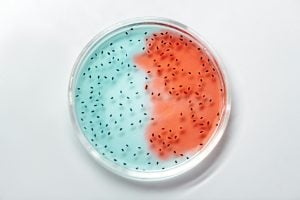
The vagina is home to a healthy balance of microorganisms—predominantly bacterial microbes such as Lactobacilli. Yeast, like Candida, can colonize the vagina as well, but in smaller amounts than bacteria.1Valentine M, Wilson D, Gresnigt MS, Hube B. Vaginal Candida albicans infections: host-pathogen-microbiome interactions. FEMS Microbiol Rev. 2025;49:fuaf013. https://doi.org/10.1093/femsre/fuaf013 The fungal components of the vaginal microbiome are known as the mycobiota.2Kalia N, Singh J, Kaur M. Microbiota in vaginal health and pathogenesis of recurrent vulvovaginal infections: a critical review. Ann Clin Microbiol Antimicrob. 2020;19(1):5. https://doi.org/10.1186/s12941-020-0347-4
Microbes in the vagina usually coexist symbiotically.2Kalia N, Singh J, Kaur M. Microbiota in vaginal health and pathogenesis of recurrent vulvovaginal infections: a critical review. Ann Clin Microbiol Antimicrob. 2020;19(1):5. https://doi.org/10.1186/s12941-020-0347-4,4Vaginal Yeast Infection. MedlinePlus. National Library of Medicine. Reviewed July 12, 2023. Accessed August 14, 2025. https://medlineplus.gov/ency/article/001511.htm Lactobacillus produces lactic acid, which helps maintain pH levels and prevents overgrowth of harmful bacteria and fungi.1Valentine M, Wilson D, Gresnigt MS, Hube B. Vaginal Candida albicans infections: host-pathogen-microbiome interactions. FEMS Microbiol Rev. 2025;49:fuaf013. https://doi.org/10.1093/femsre/fuaf013
Several factors and conditions can interfere with vaginal flora, shifting the vaginal microbiome from a balanced (eubiotic) state to an imbalanced (dysbiotic) state. These disruptions may cause an overgrowth of yeast, increasing the risk of fungal infections.1Valentine M, Wilson D, Gresnigt MS, Hube B. Vaginal Candida albicans infections: host-pathogen-microbiome interactions. FEMS Microbiol Rev. 2025;49:fuaf013. https://doi.org/10.1093/femsre/fuaf013
Bacterial vaginosis and urinary tract infections
Disruptions to the vaginal microbiome can also lead to bacterial infections, like BV and urinary tract infections (UTIs).2Kalia N, Singh J, Kaur M. Microbiota in vaginal health and pathogenesis of recurrent vulvovaginal infections: a critical review. Ann Clin Microbiol Antimicrob. 2020;19(1):5. https://doi.org/10.1186/s12941-020-0347-4,5Stapleton AE. The vaginal microbiota and urinary tract infection. Microbiol Spectr. 2016;4(6):10.1128/microbiolspec.UTI-0025-2016. https://doi.org/10.1128/microbiolspec.UTI-0025-2016 Each has different causes, symptoms, and treatments.
“BV produces thin, gray, or white discharge with a strong fishy odor,” explains Dr. Bonza, “while UTIs are marked by pelvic pain, frequent and urgent urination, and little or no vaginal discharge.”
If you’re unsure whether you have a yeast infection or a bacterial infection, it’s best to schedule an appointment with a medical provider. A pelvic examination will detect signs of Candida, such as dry, white spots on the vaginal walls, white discharge, and swelling or redness in the vaginal area.4Vaginal Yeast Infection. MedlinePlus. National Library of Medicine. Reviewed July 12, 2023. Accessed August 14, 2025. https://medlineplus.gov/ency/article/001511.htm
Rx and OTC antifungal medications
A mild yeast infection can typically be treated at home with OTC creams or suppositories, unless one or more of the following apply4Vaginal Yeast Infection. MedlinePlus. National Library of Medicine. Reviewed July 12, 2023. Accessed August 14, 2025. https://medlineplus.gov/ency/article/001511.htm:
- It’s your first yeast infection
- Your symptoms are severe
- You’re pregnant or could soon become pregnant
- You could have a sexually transmitted infection
- You have a weakened immune system
- You’re not sure if you have a vaginal yeast infection or another type of infection
Some symptoms may require prescription antifungal medication.4Vaginal Yeast Infection. MedlinePlus. National Library of Medicine. Reviewed July 12, 2023. Accessed August 14, 2025. https://medlineplus.gov/ency/article/001511.htm “My preferred treatments include FDA–approved antifungal medications like oral fluconazole or vaginal suppositories such as miconazole, clotrimazole, or terconazole,” says Dr. Bonza.
Although conventional antifungal medications can effectively treat yeast infections in many cases, an integrative approach may be preferred with chronic infections, when treating non-albicans Candida species, or to avoid the side effects of topical or oral medications. Nausea, abdominal pain, and headaches have been reported with oral antifungal use, while burning, itching, and irritation are common side effects of antifungal creams.6Satora M, Grunwald A, Zaremba B, et al. Treatment of vulvovaginal candidiasis—an overview of guidelines and the latest treatment methods. J Clin Med. 2023;12(16):5376. Published 2023 Aug 18. https://doi.org/10.3390/jcm12165376
How to use boric acid for a yeast infection
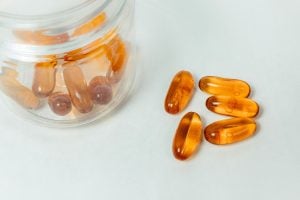
Boric acid is a safe and effective alternative to topical and oral antifungal medications, but it should be avoided if you are pregnant, could soon become pregnant, or breastfeeding.6Satora M, Grunwald A, Zaremba B, et al. Treatment of vulvovaginal candidiasis—an overview of guidelines and the latest treatment methods. J Clin Med. 2023;12(16):5376. Published 2023 Aug 18. https://doi.org/10.3390/jcm12165376
“My favorite remedy for simple or single yeast infections is topical boric acid,” says Lorilee Schoenbeck, ND, founder of Mountain View Natural Medicine in Colchester, Vermont. “This can be most [economical] by getting a bottle of boric acid powder from the pharmacy. It’s an OTC remedy, not requiring a prescription. If the pharmacy doesn’t sell empty ‘00’ capsules, they are usually available at a local health food store. Fill a capsule with boric acid, then insert one as a vaginal suppository nightly for five nights. Health food stores may also have boric acid vaginal suppositories.”
Prefilled suppositories are also available at the pharmacy. For a 600 mg dose, some recommendations indicate a two-week course.6Satora M, Grunwald A, Zaremba B, et al. Treatment of vulvovaginal candidiasis—an overview of guidelines and the latest treatment methods. J Clin Med. 2023;12(16):5376. Published 2023 Aug 18. https://doi.org/10.3390/jcm12165376
More natural treatments for itching, irritation, and discharge
Some natural remedies for yeast infections are standalone treatments, while others can be used in addition to conventional antifungals.
Probiotics
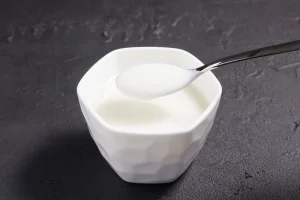
Studies have found that Lactobacillus probiotics alleviate yeast infection symptoms when used alongside standard antifungal medications.6Satora M, Grunwald A, Zaremba B, et al. Treatment of vulvovaginal candidiasis—an overview of guidelines and the latest treatment methods. J Clin Med. 2023;12(16):5376. Published 2023 Aug 18. https://doi.org/10.3390/jcm12165376 However, the effectiveness of using probiotics as a sole treatment for yeast infections is unclear.1Valentine M, Wilson D, Gresnigt MS, Hube B. Vaginal Candida albicans infections: host-pathogen-microbiome interactions. FEMS Microbiol Rev. 2025;49:fuaf013. https://doi.org/10.1093/femsre/fuaf013 A review of 10 human trials found that probiotic supplements and suppositories enhanced short-term effectiveness of conventional antifungal therapy when taken before, during, or after treatment. Higher-quality evidence is needed.3Xie HY, Feng D, Wei DM, et al. Probiotics for vulvovaginal candidiasis in non-pregnant women. Cochrane Database Syst Rev. 2017;11(11):CD010496. https://doi.org/10.1002/14651858.cd010496.pub2
Some clinical research suggests that probiotic yeasts, such as Saccharomyces cerevisiae and Saccharomyces boulardii, may be beneficial in managing Candida infections.6Satora M, Grunwald A, Zaremba B, et al. Treatment of vulvovaginal candidiasis—an overview of guidelines and the latest treatment methods. J Clin Med. 2023;12(16):5376. Published 2023 Aug 18. https://doi.org/10.3390/jcm12165376,7Kunyeit L, Ka AA, Rao RP. Application of probiotic yeasts on Candida species associated infection. J Fungi (Basel). 2020;6(4):189. Published 2020 Sep 25. https://doi.org/10.3390/jof6040189
One small preliminary study of 40 women with uncomplicated yeast infections found that combining clotrimazole with Saccharomyces cerevisiae, Lactobacillus acidophilus GLA–14, and melatonin could more effectively treat vaginal infections than clotrimazole alone. The combined approach also reduced recurrence rates and better restored vaginal flora.8Stabile G, Gentile RM, Carlucci S, Restaino S, De Seta F. A new therapy for uncomplicated vulvovaginal candidiasis and its impact on vaginal flora. Healthcare (Basel). 2021;9(11):1555. Published 2021 Nov 16. https://doi.org/10.3390/healthcare9111555
Taking antifungals and oral probiotics during antibiotic therapy may help prevent future fungal infections, as antibiotic use is a risk factor for Candida overgrowth.1Valentine M, Wilson D, Gresnigt MS, Hube B. Vaginal Candida albicans infections: host-pathogen-microbiome interactions. FEMS Microbiol Rev. 2025;49:fuaf013. https://doi.org/10.1093/femsre/fuaf013 Avoid taking antibiotics at the same time as probiotics, as this may reduce probiotic effectiveness.3Xie HY, Feng D, Wei DM, et al. Probiotics for vulvovaginal candidiasis in non-pregnant women. Cochrane Database Syst Rev. 2017;11(11):CD010496. https://doi.org/10.1002/14651858.cd010496.pub2
Although probiotics appear to be safe for women with vaginal infections, they may not be suitable for everyone.1Valentine M, Wilson D, Gresnigt MS, Hube B. Vaginal Candida albicans infections: host-pathogen-microbiome interactions. FEMS Microbiol Rev. 2025;49:fuaf013. https://doi.org/10.1093/femsre/fuaf013,3Xie HY, Feng D, Wei DM, et al. Probiotics for vulvovaginal candidiasis in non-pregnant women. Cochrane Database Syst Rev. 2017;11(11):CD010496. https://doi.org/10.1002/14651858.cd010496.pub2 Talk to your doctor before using probiotics for a yeast infection if you have a weakened immune system.8Stabile G, Gentile RM, Carlucci S, Restaino S, De Seta F. A new therapy for uncomplicated vulvovaginal candidiasis and its impact on vaginal flora. Healthcare (Basel). 2021;9(11):1555. Published 2021 Nov 16. https://doi.org/10.3390/healthcare9111555
Yogurt and honey
When used intravaginally, a mixture of (likely plain) yogurt and bees’ honey may work as well as some topical antifungal medications in eliminating excess yeast. A small study involving 129 pregnant women with yeast infections found the combination more effective than tioconazole, an OTC antifungal.9Abdelmonem AM, Rasheed SM, Mohamed ASh. Bee-honey and yogurt: a novel mixture for treating patients with vulvovaginal candidiasis during pregnancy. Arch Gynecol Obstet. 2012 Jul;286(1):109-14. https://doi.org/10.1007/s00404-012-2242-5
Apple cider vinegar
Apple cider vinegar’s organic acids and phenolic compounds appear to have antifungal properties against Candida albicans in vitro.10Ousaaid D, Laaroussi H, Bakour M, Ennaji H, Lyoussi B, El Arabi I. Antifungal and antibacterial activities of apple vinegar of different cultivars. Int J Microbiol. 2021;2021:1-6. https://doi.org/10.1155/2021/6087671,11Yagnik D, Serafin V, J Shah A. Antimicrobial activity of apple cider vinegar against Escherichia coli, Staphylococcus aureus and Candida albicans; downregulating cytokine and microbial protein expression. Sci Rep. 2018;8(1):1732. https://doi.org/10.1038/s41598-017-18618-x However, human studies are lacking. It’s unclear whether drinking apple cider vinegar, applying a diluted mixture to the vaginal area, or soaking in an apple cider vinegar bath eases yeast infection symptoms without the risk of irritation.
Hydrogen peroxide
Lactobacilli produce antimicrobial substances, including hydrogen peroxide, lactic acid, and bacteriocins.1Valentine M, Wilson D, Gresnigt MS, Hube B. Vaginal Candida albicans infections: host-pathogen-microbiome interactions. FEMS Microbiol Rev. 2025;49:fuaf013. https://doi.org/10.1093/femsre/fuaf013,2Kalia N, Singh J, Kaur M. Microbiota in vaginal health and pathogenesis of recurrent vulvovaginal infections: a critical review. Ann Clin Microbiol Antimicrob. 2020;19(1):5. https://doi.org/10.1186/s12941-020-0347-4 As these byproducts are toxic to Candida, they help prevent fungal overgrowth in the vagina.3Xie HY, Feng D, Wei DM, et al. Probiotics for vulvovaginal candidiasis in non-pregnant women. Cochrane Database Syst Rev. 2017;11(11):CD010496. https://doi.org/10.1002/14651858.cd010496.pub2
Certain strains of Lactobacillus probiotics may boost natural production of hydrogen peroxide12Xie HY, Feng D, Wei DM, Mei L, Chen H, Wang X, Fang F. Probiotics for vulvovaginal candidiasis in non-pregnant women. Cochrane Database Syst Rev. 2017 Nov 23;11(11):CD010496. https://doi.org/10.1002/14651858.CD010496.pub2:
- Lactobacillus acidophilus
- Lactobacillus crispatus
- Lactobacillus vaginalis
There is no credible human research to support the use of household hydrogen peroxide in treating yeast infections.
Garlic
Preliminary research has shown that garlic extract is effective against Candida albicans in vitro.13Said MM, Watson C, Grando D. Garlic alters the expression of putative virulence factor genes SIR2 and ECE1 in vulvovaginal C. albicans isolates. Sci Rep. 2020;10(1):3615. https://doi.org/10.1038/s41598-020-60178-0 In a randomized clinical trial of 64 women with yeast infections, a vaginal cream containing garlic and thyme worked as well as clotrimazole.14Bahadoran P, Rokni FK, Fahami F. Investigating the therapeutic effect of vaginal cream containing garlic and thyme compared to clotrimazole cream for the treatment of mycotic vaginitis. Iran J Nurs Midwifery Res. 2010;15(Suppl 1):343-349. https://pubmed.ncbi.nlm.nih.gov/22069409
Another small clinical trial suggests that products containing garlic may be a potential alternative to fluconazole, a commonly prescribed medication for yeast infections.15Ebrahimy F, Dolatian M, Moatar F, Majd HA. Comparison of the therapeutic effects of Garcin(®) and fluconazole on Candida vaginitis. Singapore Med J. 2015;56(10):567-572. https://doi.org/10.11622/smedj.2015153 However, more research is needed.
Essential oils
Many essential oils with antifungal properties have shown protective benefits against Candida in laboratory studies16Swamy MK, Akhtar MS, Sinniah UR. Antimicrobial properties of plant essential oils against human pathogens and their mode of action: an updated review. Evid Based Complement Alternat Med. 2016;2016:3012462. https://doi.org/10.1155/2016/3012462:
- Oregano oil (or oil of oregano, a diluted form of the oil)
- Thyme oil
- Clove oil
- Rosemary oil
- Clary sage
- Coriander oil
- Tea tree oil
According to lab data, Candida albicans may be more sensitive to tea tree oil and oregano essential oil than to antifungal medications like clotrimazole. Mint, basil, lavender, and winter savory have also been shown to inhibit yeast growth and activity.17Bona E, Cantamessa S, Pavan M, et al. Sensitivity of Candida albicans to essential oils: are they an alternative to antifungal agents?. J Appl Microbiol. 2016;121(6):1530-1545. https://doi.org/10.1111/jam.13282
A preliminary study found that a tea tree oil suppository safely and effectively eliminated a yeast infection when paired with probiotics. However, larger clinical trials are needed.18Di Vito M, Fracchiolla G, Mattarelli P, Modesto M, Tamburro A, et al. Probiotic and tea tree oil treatments improve therapy of vaginal candidiasis: a preliminary clinical study. Med J Obstet Gynecol. 2016;4(4): 1090. https://ricerca.uniba.it/bitstream/11586/185012/1/obstetrics-4-1090.pdf
Pure vs. diluted oils
Tea tree oil is extracted from the leaves of the Melaleuca alternifolia tree,18Di Vito M, Fracchiolla G, Mattarelli P, Modesto M, Tamburro A, et al. Probiotic and tea tree oil treatments improve therapy of vaginal candidiasis: a preliminary clinical study. Med J Obstet Gynecol. 2016;4(4): 1090. https://ricerca.uniba.it/bitstream/11586/185012/1/obstetrics-4-1090.pdf while oregano essential oil comes from the leaves and flowering tops of wild oregano, specifically Origanum vulgare.16Swamy MK, Akhtar MS, Sinniah UR. Antimicrobial properties of plant essential oils against human pathogens and their mode of action: an updated review. Evid Based Complement Alternat Med. 2016;2016:3012462. https://doi.org/10.1155/2016/3012462 Oil of oregano is typically a blend of oregano leaves and a carrier such as coconut oil.
Essential oils, especially tea tree oil, are potent. Never apply oils directly to the skin without diluting them first. The same goes for inserting essential oils into the vagina. Coconut oil, avocado oil, vegetable oil, and aloe vera gel can be used as carriers.19Farrar AJ, Farrar FC. Clinical aromatherapy. Nurs Clin North Am. 2020;55(4):489-504. https://doi.org/10.1016/j.cnur.2020.06.015
Prefilled suppositories containing diluted tea tree oil can be used intravaginally to treat a yeast infection. Suppositories are available at many health food stores.
Proper prevention and cleaning tips
Yeast thrives in warm, humid environments. Douching, sex, antibiotic use, high glucose levels (as with diabetes), oral contraceptives, pregnancy, and hormone replacement therapies may predispose some women to excessive fungal growth or aggravate a current yeast infection.1Valentine M, Wilson D, Gresnigt MS, Hube B. Vaginal Candida albicans infections: host-pathogen-microbiome interactions. FEMS Microbiol Rev. 2025;49:fuaf013. https://doi.org/10.1093/femsre/fuaf013
Lifestyle modifications can help reduce the risk of future yeast infections, notes Dr. Bonza. “Wearing breathable underwear, avoiding douching, controlling blood sugar, and focusing on a whole food, plant-based diet helps prevent recurrence.”
To manage discharge during treatment, keep the vaginal area clean and dry. Rinse genitals with water only, and avoid using soap or feminine hygiene products.4Vaginal Yeast Infection. MedlinePlus. National Library of Medicine. Reviewed July 12, 2023. Accessed August 14, 2025. https://medlineplus.gov/ency/article/001511.htm
Natural remedies for frequent yeast infections
“If vaginal yeast infections are a recurrent problem, there’s probably an ‘intestinal reservoir’ of candida overgrowth,” explains Dr. Schoenbeck. “Note that this isn’t the same thing as systemic candida, which is very rare.”
For women who experience ongoing infections, Dr. Schoenbeck typically recommends a combined approach that includes antifungal supplements along with dietary and lifestyle modifications.
“Because yeast loves sugar, I recommend a diet low in simple carbohydrates for a month, while taking oral ‘anti-candidal’ supplements,” she says. “The best of these [supplements] contain ingredients like berberine, grapefruit extract, and undecylenic acid. Do this while making sure to eliminate other yeast sources: change out of bathing and gym suits right away, and wear loose, cotton underwear.”
Following these steps can make it easier to manage recurring yeast infections and protect against future ones.
Footnotes
- 1Valentine M, Wilson D, Gresnigt MS, Hube B. Vaginal Candida albicans infections: host-pathogen-microbiome interactions. FEMS Microbiol Rev. 2025;49:fuaf013. https://doi.org/10.1093/femsre/fuaf013
- 2Kalia N, Singh J, Kaur M. Microbiota in vaginal health and pathogenesis of recurrent vulvovaginal infections: a critical review. Ann Clin Microbiol Antimicrob. 2020;19(1):5. https://doi.org/10.1186/s12941-020-0347-4
- 3Xie HY, Feng D, Wei DM, et al. Probiotics for vulvovaginal candidiasis in non-pregnant women. Cochrane Database Syst Rev. 2017;11(11):CD010496. https://doi.org/10.1002/14651858.cd010496.pub2
- 4Vaginal Yeast Infection. MedlinePlus. National Library of Medicine. Reviewed July 12, 2023. Accessed August 14, 2025. https://medlineplus.gov/ency/article/001511.htm
- 5Stapleton AE. The vaginal microbiota and urinary tract infection. Microbiol Spectr. 2016;4(6):10.1128/microbiolspec.UTI-0025-2016. https://doi.org/10.1128/microbiolspec.UTI-0025-2016
- 6Satora M, Grunwald A, Zaremba B, et al. Treatment of vulvovaginal candidiasis—an overview of guidelines and the latest treatment methods. J Clin Med. 2023;12(16):5376. Published 2023 Aug 18. https://doi.org/10.3390/jcm12165376
- 7Kunyeit L, Ka AA, Rao RP. Application of probiotic yeasts on Candida species associated infection. J Fungi (Basel). 2020;6(4):189. Published 2020 Sep 25. https://doi.org/10.3390/jof6040189
- 8Stabile G, Gentile RM, Carlucci S, Restaino S, De Seta F. A new therapy for uncomplicated vulvovaginal candidiasis and its impact on vaginal flora. Healthcare (Basel). 2021;9(11):1555. Published 2021 Nov 16. https://doi.org/10.3390/healthcare9111555
- 9Abdelmonem AM, Rasheed SM, Mohamed ASh. Bee-honey and yogurt: a novel mixture for treating patients with vulvovaginal candidiasis during pregnancy. Arch Gynecol Obstet. 2012 Jul;286(1):109-14. https://doi.org/10.1007/s00404-012-2242-5
- 10Ousaaid D, Laaroussi H, Bakour M, Ennaji H, Lyoussi B, El Arabi I. Antifungal and antibacterial activities of apple vinegar of different cultivars. Int J Microbiol. 2021;2021:1-6. https://doi.org/10.1155/2021/6087671
- 11Yagnik D, Serafin V, J Shah A. Antimicrobial activity of apple cider vinegar against Escherichia coli, Staphylococcus aureus and Candida albicans; downregulating cytokine and microbial protein expression. Sci Rep. 2018;8(1):1732. https://doi.org/10.1038/s41598-017-18618-x
- 12Xie HY, Feng D, Wei DM, Mei L, Chen H, Wang X, Fang F. Probiotics for vulvovaginal candidiasis in non-pregnant women. Cochrane Database Syst Rev. 2017 Nov 23;11(11):CD010496. https://doi.org/10.1002/14651858.CD010496.pub2
- 13Said MM, Watson C, Grando D. Garlic alters the expression of putative virulence factor genes SIR2 and ECE1 in vulvovaginal C. albicans isolates. Sci Rep. 2020;10(1):3615. https://doi.org/10.1038/s41598-020-60178-0
- 14Bahadoran P, Rokni FK, Fahami F. Investigating the therapeutic effect of vaginal cream containing garlic and thyme compared to clotrimazole cream for the treatment of mycotic vaginitis. Iran J Nurs Midwifery Res. 2010;15(Suppl 1):343-349. https://pubmed.ncbi.nlm.nih.gov/22069409
- 15Ebrahimy F, Dolatian M, Moatar F, Majd HA. Comparison of the therapeutic effects of Garcin(®) and fluconazole on Candida vaginitis. Singapore Med J. 2015;56(10):567-572. https://doi.org/10.11622/smedj.2015153
- 16Swamy MK, Akhtar MS, Sinniah UR. Antimicrobial properties of plant essential oils against human pathogens and their mode of action: an updated review. Evid Based Complement Alternat Med. 2016;2016:3012462. https://doi.org/10.1155/2016/3012462
- 17Bona E, Cantamessa S, Pavan M, et al. Sensitivity of Candida albicans to essential oils: are they an alternative to antifungal agents?. J Appl Microbiol. 2016;121(6):1530-1545. https://doi.org/10.1111/jam.13282
- 18Di Vito M, Fracchiolla G, Mattarelli P, Modesto M, Tamburro A, et al. Probiotic and tea tree oil treatments improve therapy of vaginal candidiasis: a preliminary clinical study. Med J Obstet Gynecol. 2016;4(4): 1090. https://ricerca.uniba.it/bitstream/11586/185012/1/obstetrics-4-1090.pdf
- 19Farrar AJ, Farrar FC. Clinical aromatherapy. Nurs Clin North Am. 2020;55(4):489-504. https://doi.org/10.1016/j.cnur.2020.06.015



